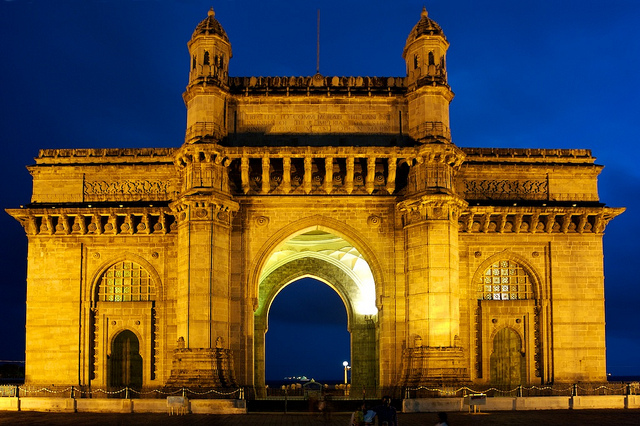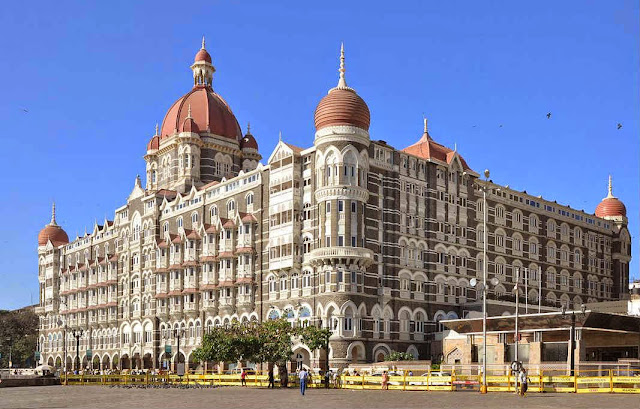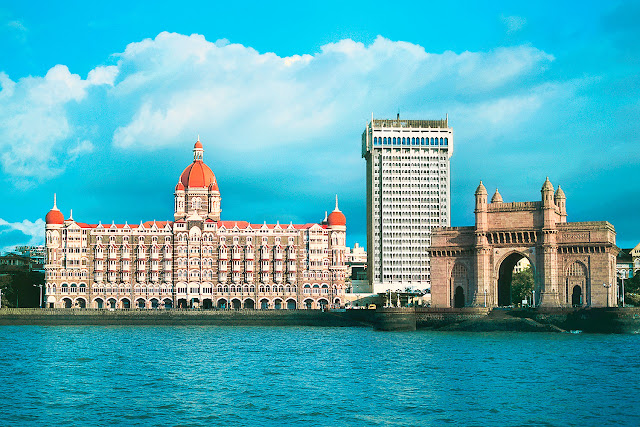Mumbai Travel
Mumbai Travel
Mumbai is a densely populated city of India . It's the India's largest financial centre . The city is also famous for "BOLLYWOOD FILM INDUSTRY". Offshore, nearby Elephanta Island holds ancient cave temples dedicated to the Hindu god Shiva. On the Mumbai Harbour waterfront stands the iconic "GATEWAY OF INDIA" stone arch, built by the British Raj in 1924. Mumbai is India’s financial powerhouse, fashion epicentre and a pulse point of religious tension.
Top Sights :
Gateway of India.
The Gateway of India is located on the waterfront at Apollo Bunder area at the end of Chhatrapati Shivaji Maharaj Marg in South Mumbai and overlooks the Arabian Sea The monument has also been referred to as the Taj Mahal of Mumbai,and is the city's top tourist attraction.The Gateway of India is an arch monument built during the 20th century in Mumbai, India. The monument was erected to commemorate the landing of King-Emperor George V and Queen-Empress Mary at Apollo Bunder on their visit to India in 1911.Built in Indo-Saracenic style, the foundation stone for the Gateway of India was laid on 31 March 1911. The structure is an arch made of balast, 26 metres high. The final design of George Wittet was sanctioned in 1914 and the construction of the monument was completed in 1924. The Gateway was later used as a symbolic ceremonial entrance to India for Viceroys and the new Governor of Bombay .It served to allow entry and access to India.
Taj Mahal Palace.
Taj Mahal Palace is the Mumbai's most famous landmark and India's second most photographed monument . It was built in 1903 by Parsi Industrailist JN Tata . Dozens of people were killed during terrorist attack in 2008. The hotel was rebuild after the attack and reopened on Independence Day 2010.Today the Taj fronts the harbour and Gateway of India, but it was originally designed to face the city.
Elephanta Island.
The Island is located about 2km away from Jawaharlal Nehru Port.The Elephanta Caves contain rock cut stone sculptures that show syncretism of Hindu and Buddhist ideas and iconography. The caves are hewn from solid basalt rock. Except for a few exceptions, much of the artwork is defaced and damaged.The origins and date when the caves were constructed have attracted considerable speculations and scholarly attention since the 19th century. These date them between 5th and 9th century, and attribute them to various Hindu dynasties. They are more commonly placed between 5th and 7th centuries. Most scholars consider it to have been completed by about 550 CE.
Dr Bhau Daji Lad Museum.
This gorgeous museum, built in Renaissance revival style in 1872 as the Victoria & Albert Museum, contains 3500-plus objects centring on Mumbai’s history – photography, maps, textiles, books, manuscripts, bidriware , lacquerware, weaponry and exquisite pottery. The landmark building was renovated in 2008, with its Minton-tile floors, gilded ceiling mouldings, ornate columns, chandeliers and staircases all gloriously restored.The museum, which also hosts a bevy of temporary exhibitions, is located in the lush gardens of Jijamata Udyan; skip the zoo.
Iskcon Temple.
Iskcon Juhu plays a key part in the Hare Krishna story.
The temple compound comes alive during prayer time as the faithful whip themselves into a devotional frenzy of joy, with kirtan dancing accompanied by crashing hand symbols and drumbeats.It's a compelling place to visit for intense, celebratory worship in the sedate suburbs.













1 Comments
Really it was an awesome article…very interesting to read. it was exceptionally helpful!
ReplyDeleteVisit Tajmahal Sunrise Tour